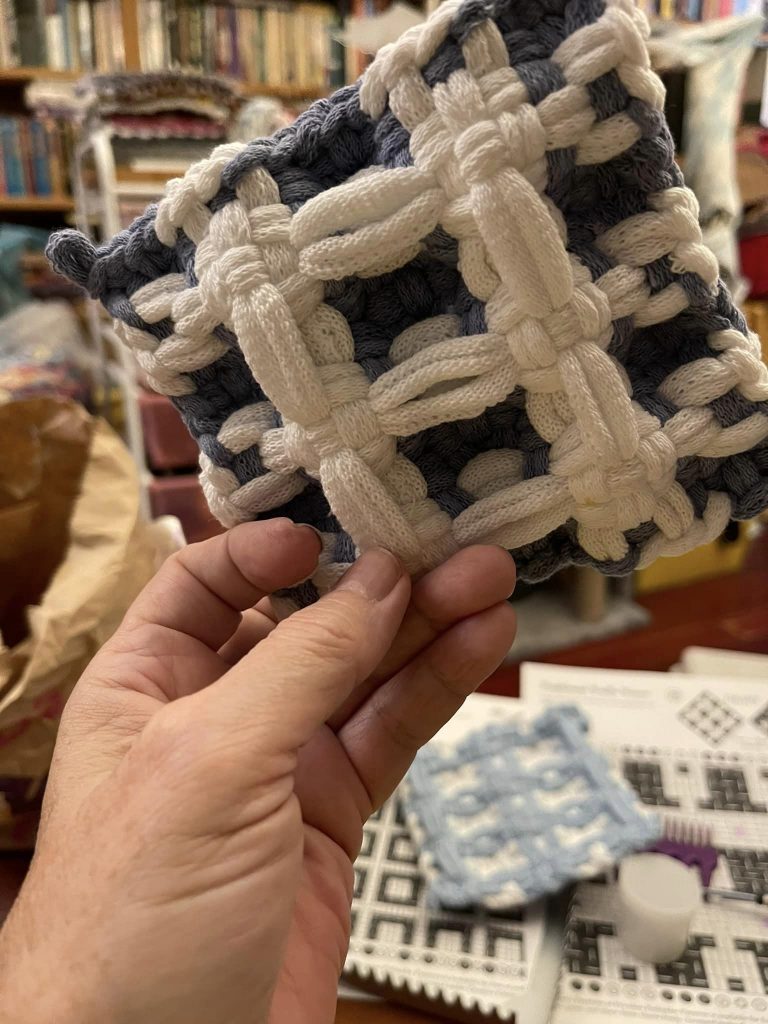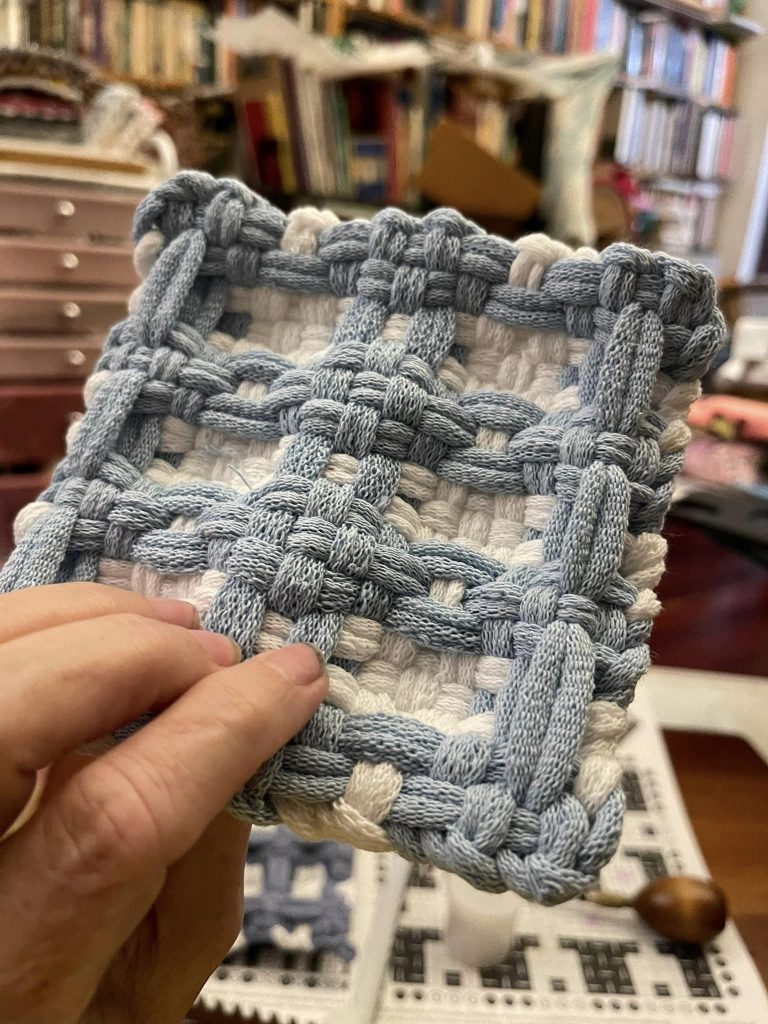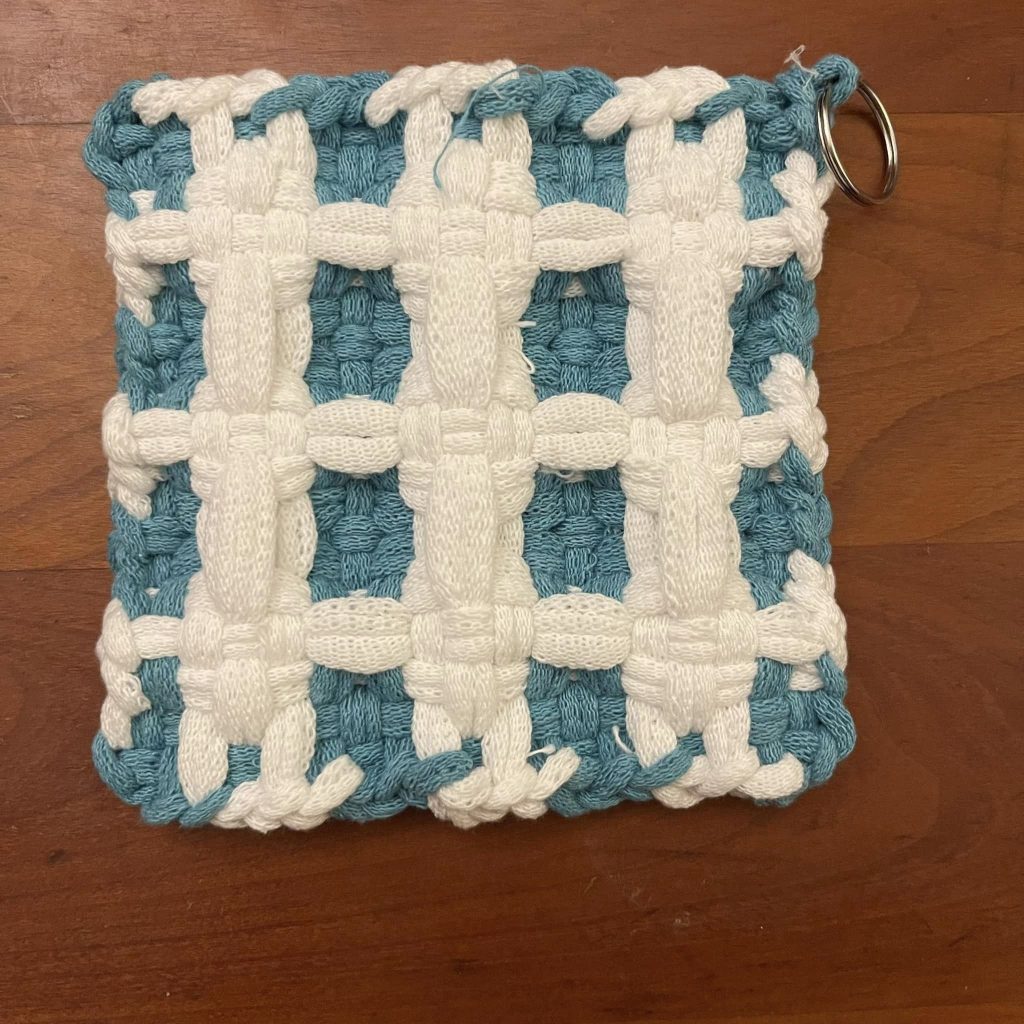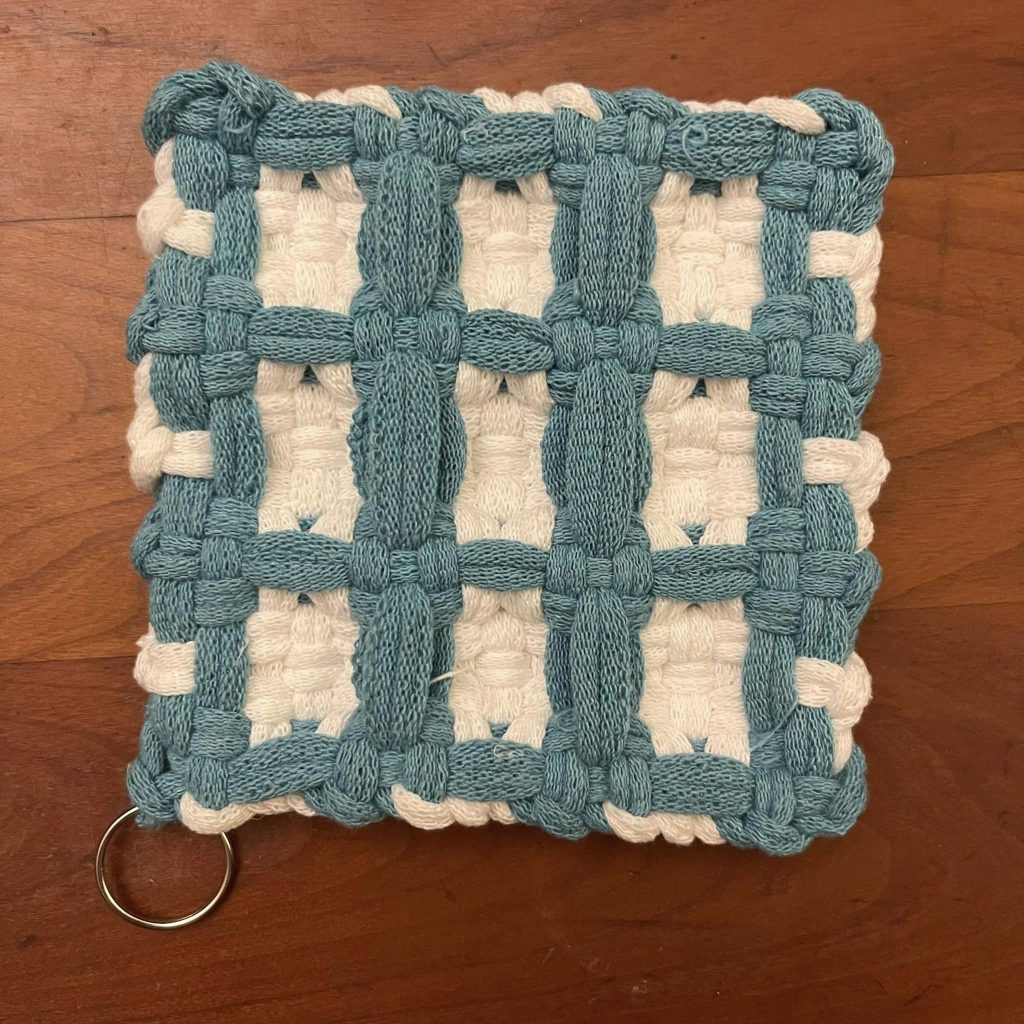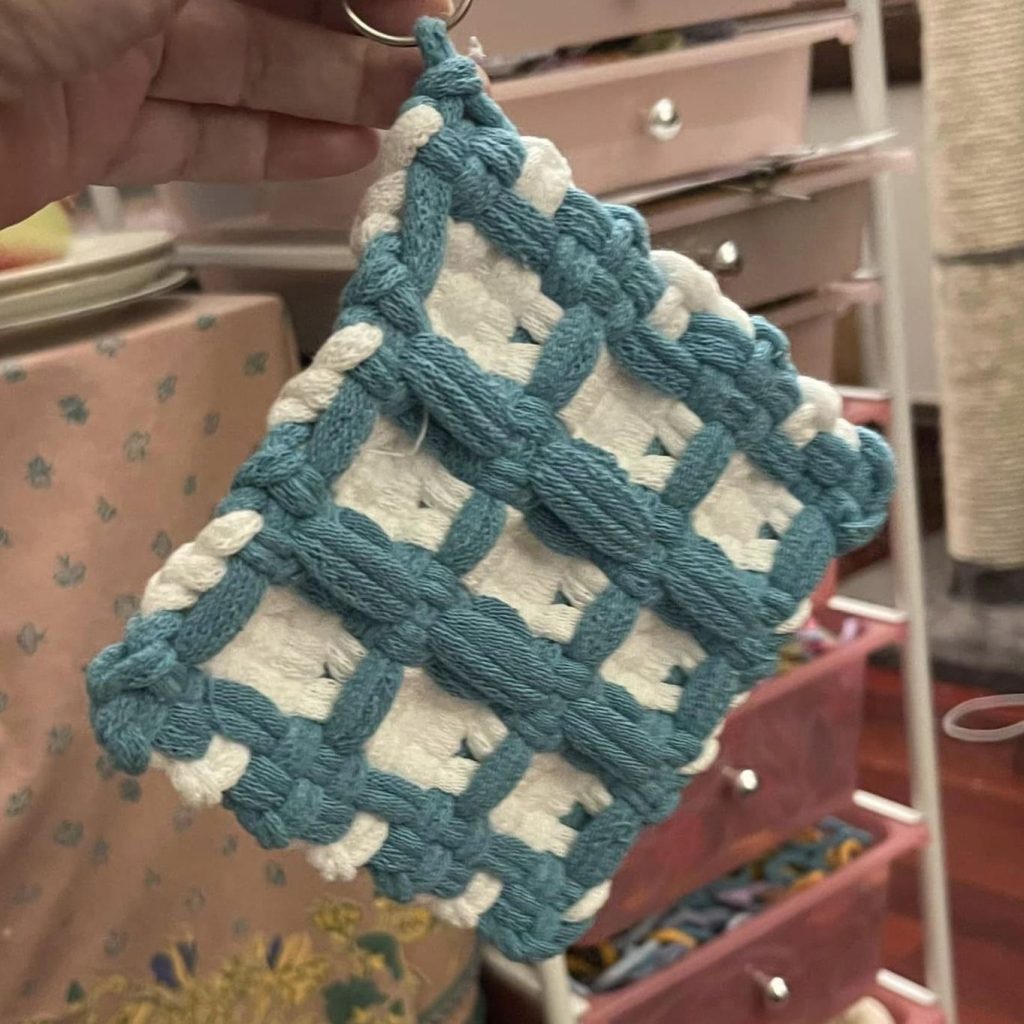Earlier today, Deborah Jean Cohen (author of In the Loop) took to Facebook to complain that two of our earliest charts, dating from late 2020, had been created by looking at photographs of potholders that she and Bill West had posted to Facebook.
In each of those two cases, we had credited them by name as our inspiration, and neither of them had objected during the intervening years, but apparently she’s been carrying a grudge all this time, declaring in her post that we had “piggybacked on others’ hard work… Sure, it’s legal, but is it ethical? You’re on notice now.”
I’m not sure what that last sentence means, and it seems I won’t ever get to ask her, because she’s now blocked me and banned me from the Facebook group she administers.
The two charts in question are not particularly complicated, and the designs they show are indubitably in the public domain — they don’t belong to anyone.
For thousands of years, weavers developed their repertoires by practicing techniques other people had developed, and then evolving their own variations on them. By the dawn of the nineteenth century these designs were being collected in pattern books, and later publishers aggregated those references into larger and larger collections, each with hundreds or thousand of charts. Hundreds of those books have been digitized, and tens of thousands of patterns from them have been posted online.
Uncountable millions of hours have gone into producing this body of techniques and patterns — the shared legacy of humanity’s ongoing love affair with string, stretching back a thousand generations — so literally everyone involved in fiber crafts today is “piggybacking on others’ hard work.”
All modern weavers have access to this incredible legacy of public domain material, allowing us to select elements that catch our eye, modifying and recombining and elaborating on them in innumerable ways, and then putting the results of our efforts back out into the world.
The idea that when Deborah looked at other people’s weaving and made her own variation of it, that effort had been meaningful creative work — but when we later looked at her weaving and made our own variation of it, this was now unethical, a form of cheating, and a shocking breach of norms — well, I don’t think it holds water.
That said, I figured I might as well rectify the perceived slight, so I have deleted the charts that we created in 2020 for “Square Spiral” and “Diamond Spiral,” and re-drawn them anew, referring to century-old sources that have been archived at handweaving.net (a genuinely amazing community resource): a square spiral found in Orimono Soshiki Hen by Kiju Yoshida (1903) now adapted for 27-peg and 18-peg looms, and a twill spiral found in Die färbige Gewebemusterung by
Franz Donat (1907) likewise adapted for 27-peg and 18-peg looms.
I hope that Deborah will be able to rest easier now that our charts are no longer piggybacking on her proprietary hard work.
